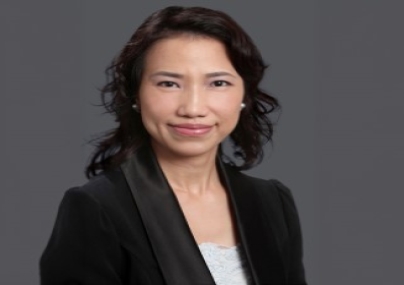
Over the past few years, corporate-backed initiatives that encourage diversity and inclusion have grown increasingly prominent in Europe and the U.S. In Asia, progress has been slower, but the positives extend beyond this simply being a social good. For those making progress in this area, there are commercial benefits to be enjoyed, lawyers say.
Gone are the days when diversity and inclusion were simply buzzwords or pleasant things to say. Such considerations are increasingly woven into staffing decisions and strategies and, in many regions, are now legally mandated.
Despite concentered efforts, there is still plenty of work to be done when it comes to ensuring equal opportunities in the workplace, particularly in the legal industry. The gender pay gap is highly visible within the legal profession, while white people still crowd management positions.
What is clear is that when it comes to D&I, there is no silver bullet, and the road to parity is still a while away; however, firms are determined to keep moving forward. While change within law firms in Asia has been slow, with the topic on everyone’s lips, awareness is at an all-time high, and firms are contemplating how to best channel this enthusiasm and drive into practice.
‘No one is where they want to be, and everyone is playing catch up’
Hong Tran is a partner at Mayer Brown. He also acts as the firm’s D&I leader, an opportunity he jumped at, despite also heading a busy employment practice.
Tran says that the firm, which is headquartered in Chicago, has long had initiatives for diversity and inclusion in place in Europe and the U.S., and it was natural that this would also become a focus for its Asia offices.
“If you look at D&I, no one is where they want to be, and everyone is playing catch up,” he says, adding that he has noticed Hong Kong-based firms making a concerted effort in this area in recent years.
The firm’s three key pushes for 2019 are its family network, which supports work-life balance, the pride and ally network for LGBT+ people, and ‘RAW’, the firm’s programme for retaining and advancing women professionally.
There’s also muscle behind these focuses. “Within the firm, on HR strategies, we’re lining up policies and practices. So, for example, we’re looking at changes to our maternity and paternity leave policy. We’ve got the firm to sign the code of practice against discrimination and employment on grounds of sexual orientation. We’re looking at flexible working arrangements within the firm,” Tran explains.
‘It’s not like we can just make a to-do list then it’s done, what’s next?’
Vicki Liu, Hong Kong managing partner at Allen & Overy, says D&I must be emphasized from the top to bring about true change.
“D&I is a strategic priority for the firm -- of course everyone says that -- but what that means for us in practice is that from the very top, at a senior management level of the firm including the partners of the firm, it all starts there. It’s set out as a way we approach our business, the way we build our team,” she says.
For international firms, initiatives often originate in their U.S. or UK branches first. Liu says that in Hong Kong, the firm is guided by global strategy, but it’s also important to listen and adapt these approaches.
“It’s the responsibility of every single partner to implement D&I in their everyday working. So, when we then bring it down to the office level, or local level in Asia, each of us has a responsibility, as partners, to implement and feed into the policy and its execution. It isn’t one size fits all,” she says.
“When we’re talking about D&I specifically, what implementing diversity entails in practice in the London office, can be very different to what it entails in the China offices.”
Adapting this effectively for Hong Kong has been the result of various listening activities.
Fiona Cumming, a partner at A&O, says while flexible working arrangements are common in places with long commutes, such as Sydney and London, the approach has also been well-received in Hong Kong too. But there are other considerations which are unique to Asia.
“In Hong Kong, also in Singapore, we see relativity large expat staff communities than elsewhere. This means family time for some of our people, means ‘I need to travel home, I need a longer time off’,” Liu adds. “Also, the meaning of family for some expats isn’t necessarily that nuclear family, it’s the close network of friends, the support network you have formed locally.”
‘If you don’t have someone at the top making decisions to emphasize diversity, it’s not going to happen’
Originally based in the U.S., Daniel Roules is now the Shanghai office managing partner at Squire Patton Boggs. Through his travels and work, Roules has seen the different challenges and approaches to promoting D&I in the workplace.
At Squire Patton Boggs, D&I entered the vocabulary around seven years ago, Roules says, “and it’s just become increasingly important”. This also extends to clients and client expectations, he notes. “It’s good when you’re doing something that’s good, and it’s also good for your business. It’s the right thing to do, but it also makes sense.”
At Squire Patton Boggs, he explains, there is an expectation of everyone at the firm to encourage and promote the values of D&I.
“We have offices in Seoul, Tokyo, Beijing, Shanghai, Hong Kong, Singapore, and various places in Australia. I think each office approaches these issues a little differently just reflecting the particular office managing partner.”
“Diversity does have to start with some mindful awareness at the top, and then work its way down,” Roules says, noting that within the Shanghai office, ensuring that staff are both skilled and representative is a continuous conversation.
Partners are also required to complete self-assessments, tied to compensation, which include a section about the “contributions that each of us are making to diversity,” he says.
As is the case with Allen & Overy and Squire Patton Boggs, Mayer Brown also uses a top-led approach.
Part of this, Tran says, is to ensure the firm’s commitment to D&I is visible in everything. This involves operating along with a D&I committee which is made up of individuals from the firm, “from partner levels down to trainee level and admin.”
“I work to increase leaders’ visibility when participating in D&I initiatives so our people and the people we work with know what we stand for on D&I. Also, our people need to see D&I in action,” says Tran.
“It’s not a one-person job. If someone said they were a full-time dedicated person on D&I, I think that’s great, but they wouldn’t be able to do everything themselves. Having been in this role for several months, I can see you need so much support to get it going.
“You just can’t be everywhere at all times and be in meetings and try and raise profile and increase visibility when there’s only one of you. You need to have lots and lots of people involved,” Tran adds.
Because D&I improvement is an ongoing target for most firms, Roules says it’s important to drive a culture shift and instill understanding so the initiative can “drive itself and we can see organic improvement in the diversity figures.”
“The painful truth is, if you don’t have someone at the top making decisions to emphasize diversity, it’s not going to happen,” he says candidly.
“I think the proof of that is you just look at a lot of international law firms and how few females, or people of diversity leaders there are in a lot of the major law firms. This is an indication that this does take conscious awareness and initiative to ensure that this doesn’t happen.”
Real change is about doing, Liu agrees: “It’s all about what kind of firm we are, leading by example and living and breathing what’s written on the piece of paper, because you can write as much as you want about it, but unless you show people and create the type of environment we talk about, then it’s meaningless.”



